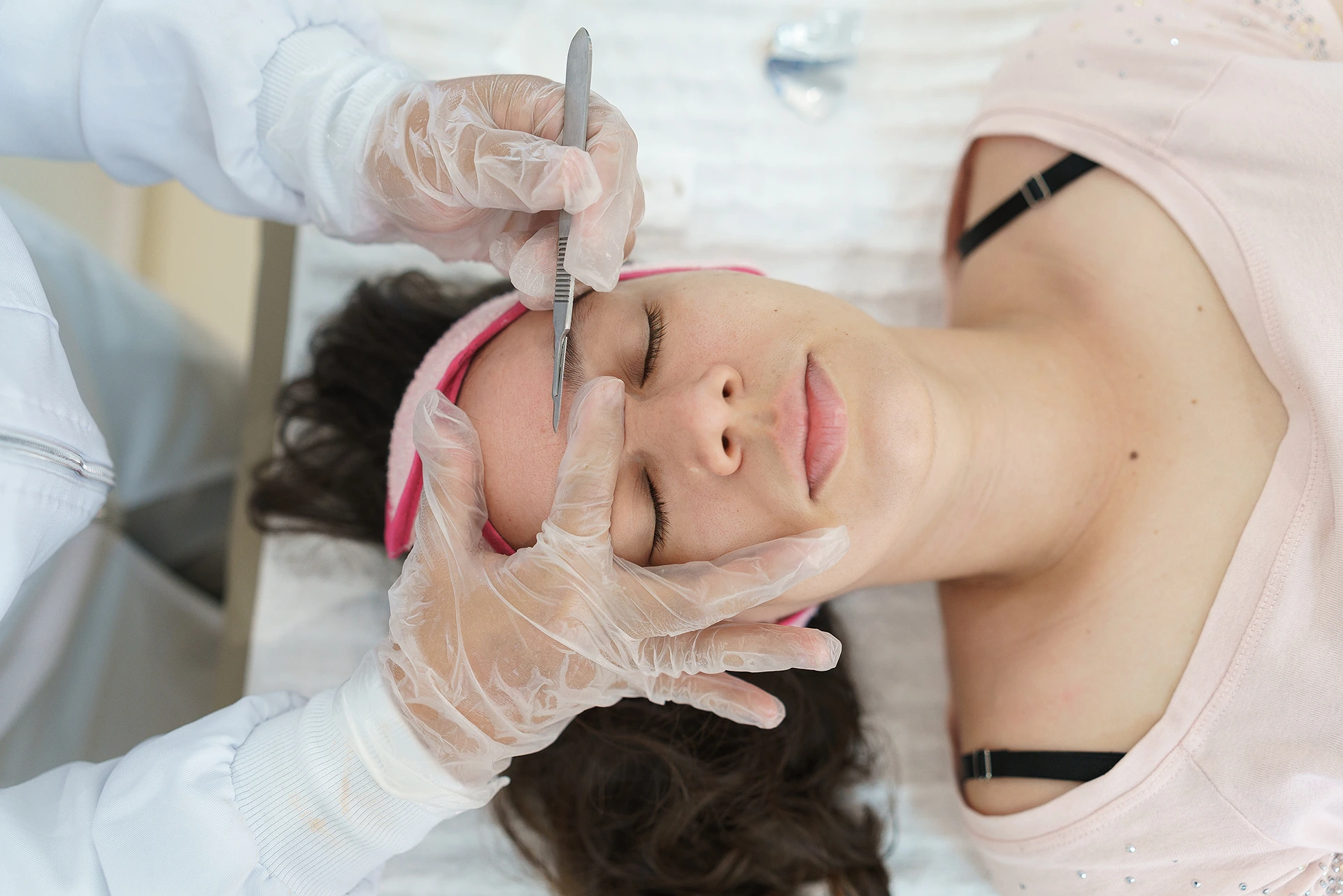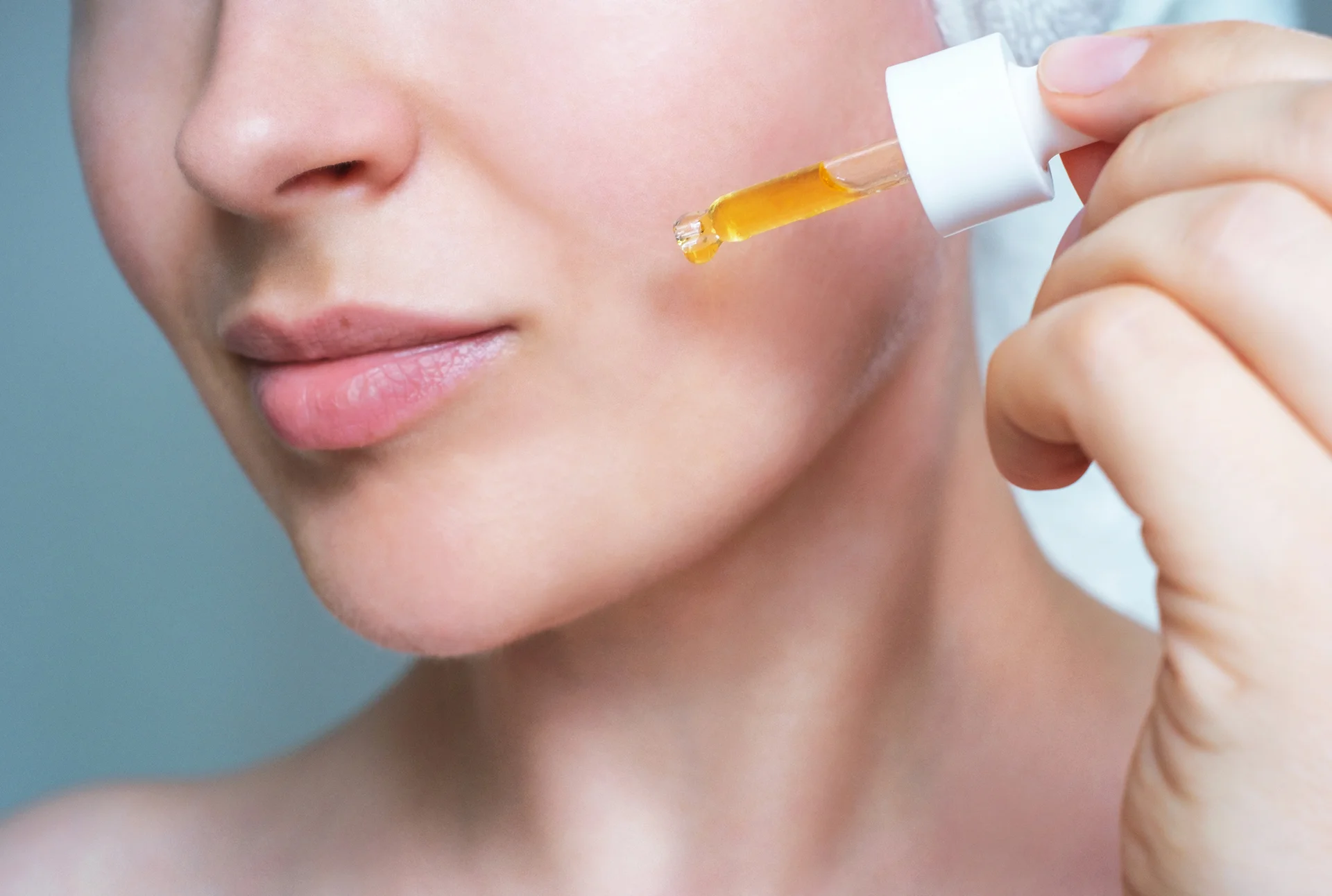Dermaplaning involves using a sterile surgical scalpel or blade to gently scrape away dead skin cells and vellus hair (aka peach fuzz) from the surface of the skin.
This process leaves behind smoother, brighter-looking skin that is better able to absorb products like serums and moisturizers.
But with such an effective treatment comes questions about frequency – how often can we safely reap these benefits without causing irritation or damage?
Let’s dive in and explore some guidelines for determining the ideal dermaplaning schedule for your unique complexion.
Understanding The Benefits Of Dermaplaning
Dermaplaning can be done either professionally or as a DIY project at home, but there are differences between the two methods that should be considered.
Professional dermaplaning involves using a scalpel under controlled conditions and with an experienced technician who understands how to use the tool safely and effectively. On the other hand, DIY dermaplaning typically uses a smaller blade and may not be performed as precisely or thoroughly. While both approaches have their advantages, professional dermaplaning tends to yield better results overall in terms of smoothing out the skin’s texture and reducing fine lines and wrinkles.
Aside from these considerations, one of the key reasons people turn to dermaplaning is because it addresses several common skin concerns such as acne scars, hyperpigmentation, and uneven texture. By removing dead surface cells and vellus hair (aka ‘peach fuzz’), dermaplaning creates a smoother canvas for makeup application while also promoting cellular turnover for healthier-looking skin over time.
Whether you decide on professional or DIY dermaplaning, make sure you choose an approach best suited for your specific skin needs and goals.
Factors To Consider For Your Skin Type
When it comes to dermaplaning, the frequency depends on various factors. One of these is your skin sensitivity. If you have sensitive skin, it’s best to wait longer periods in between treatments as frequent dermaplaning can cause irritation and redness.
Another factor to consider is hair growth. Those with faster-growing facial hair may need more frequent sessions than those whose hair grows slower. Additionally, skin concerns such as acne or rosacea may require a different approach to dermaplaning frequency.
Consulting with a skincare professional can help determine how often you should receive treatment based on individual needs and concerns.
Age also plays a role in determining the frequency of dermaplaning sessions. As we age, our cell turnover rate slows down, making exfoliation essential for maintaining healthy-looking skin. However, older individuals may want to space out their treatments further apart due to thinner and more delicate skin.
Ultimately, finding the right frequency for your unique needs will result in optimal results and healthy-looking skin.
Determining Your Ideal Frequency
If you have oily skin, you’ll want to dermaplane more frequently – about every three weeks.
However, if you have dry skin, dermaplaning every four to six weeks should be fine.
It all depends on your skin type and your skin goals.
If you’re looking for a dramatic change, more frequent dermaplaning may be necessary.
Types Of Skin
As a dermaplaning expert, I am often asked about the ideal frequency for this treatment.
Determining how often you should dermaplane depends on your skin type.
For those with oily skin, it is recommended to undergo the treatment every 2-3 weeks to remove excess oil and prevent breakouts.
However, individuals with sensitive skin may want to space out their appointments to once a month or even less frequently.
Oily skin tends to produce more sebum which can clog pores and lead to acne.
Dermaplaning helps remove dead skin cells and excess oil from the surface of the skin, promoting a clear complexion.
On the other hand, sensitive skin requires gentle care as harsh treatments can cause irritation and inflammation.
Therefore, it is important for those with sensitive skin to choose an experienced esthetician that uses proper techniques during the dermaplaning process.
By understanding your individual skin type, you can determine the optimal frequency for dermaplaning that will provide you with healthy and glowing results.
Skin Goals
Now that you know how often to dermaplane based on your skin type, let’s talk about your skin goals.
It’s important to remember that frequency and results go hand in hand.
While it may be tempting to schedule a dermaplaning appointment every week for fast results, consistency is key when it comes to achieving long-lasting effects.
Overdoing the treatment can lead to irritation and damage, which will not only delay progress but also harm your skin’s health.
Instead, aim for a consistent schedule of appointments spaced out according to your individual needs.
By doing so, you’ll get optimal results without risking over-exfoliation or other negative side effects.
Whether you’re looking to reduce fine lines and wrinkles or simply achieve smoother skin texture, finding the right balance between frequency and results is crucial for meeting your skin goals.
Tips For Safe And Effective At-Home Dermaplaning

This non-invasive treatment can effectively exfoliate dead skin cells and peach fuzz, leaving your face baby-soft and glowing.
However, before diving into at-home dermaplaning, it’s important to take precautionary measures to ensure safety.
Make sure that your skin is clean and dry before starting the process. Avoid using any products containing alcohol or other harsh chemicals as this may cause irritation or dryness. Invest in high-quality tools such as a sterile surgical blade or dermaplaning tool designed specifically for home use . It’s also recommended to avoid areas of the face with active acne or inflammation to prevent further damage.
Remember to always follow instructions carefully and never apply too much pressure when working on delicate facial areas.
When done correctly, at-home dermaplaning can provide numerous benefits for your skin but should only be done once every two weeks maximum. Overdoing it could potentially lead to redness, sensitivity or even scarring if not performed safely.
A little goes a long way so give your skin enough time to recover between sessions! With these tips in mind along with proper technique and good hygiene practices, you’ll have brighter, smoother-looking skin in no time!
Frequently Asked Questions
Can I Dermaplane If I Have Active Acne Or Breakouts?
If you have active acne or breakouts, it’s important to take extra precautions when dermaplaning. Here are some dos and don’ts to keep in mind:
- Do sanitize your blade before and after use, as bacteria can easily spread on the skin.
- Don’t apply too much pressure or go over the same area repeatedly, as this can cause further irritation.
- Use a gentle exfoliating cleanser beforehand to help remove dead skin cells and debris.
- As for products, look for those that contain salicylic acid or benzoyl peroxide to help treat existing acne while preventing new breakouts from forming.
- Aftercare is crucial – avoid touching your face afterwards, and be sure to moisturize with a non-comedogenic formula to prevent clogging pores.
- If you experience any redness or irritation post-dermaplaning, try using a calming serum with ingredients like chamomile or aloe vera.
By following these tips, you can safely enjoy the benefits of dermaplaning without risking further damage to your skin!
Can Dermaplaning Cause Scarring Or Hyperpigmentation?
As a dermaplaning expert, I always stress the importance of prevention techniques and aftercare routines to avoid scarring or hyperpigmentation.
While dermaplaning itself is a safe and non-invasive procedure, it’s crucial to properly prepare your skin beforehand by cleansing thoroughly and avoiding any active breakouts.
After the treatment, make sure to use gentle products and protect your newly exposed skin from sun exposure.
By following these precautions, you can minimize the risk of scarring or hyperpigmentation and achieve optimal results from each dermaplaning session.
How Long Does It Take For Hair To Grow Back After Dermaplaning?
Hair growth is a natural process that varies from person to person.
After dermaplaning, hair will typically grow back within 2-4 weeks.
However, this timeframe can vary depending on an individual’s hair growth cycle and maintenance routine.
To keep the skin smooth and free of unwanted peach fuzz or dead skin cells, it’s recommended to incorporate regular dermaplaning sessions into your skincare regimen.
A consistent schedule can help maintain the results and ensure optimal benefits for the skin.
Remember to always follow proper aftercare instructions provided by a professional to avoid any potential risks such as scarring or hyperpigmentation.
Can I Combine Dermaplaning With Other Facial Treatments Like Chemical Peels Or Microneedling?
There are certain best practices that should be followed to ensure the safety and effectiveness of these procedures.
It is important to space out these treatments properly to avoid over exfoliation and potential damage to the skin.
It is crucial to communicate with your skincare professional about any concerns or sensitivities you may have before undergoing multiple facial treatments.
Overall, when done correctly, combining dermaplaning with other facial treatments can lead to amazing results for your skin’s health and appearance.
Is It Safe To Dermaplane If I Have Sensitive Skin Or Rosacea?
If you have sensitive skin or rosacea, dermaplaning may not be the best option for exfoliation. However, there are alternative methods that can provide similar benefits without causing irritation or inflammation.
For example, enzymatic peels and gentle chemical exfoliants can help to remove dead skin cells and promote cell turnover without physical abrasion. As for rosacea, dermaplaning may exacerbate redness and inflammation in some cases.
It’s important to consult with a skincare professional before undergoing any treatment if you have this condition.
Overall, while dermaplaning is an effective exfoliation method for many people, it’s not suitable for everyone and should be approached with caution if you have sensitive skin or rosacea.
Conclusion

The frequency of dermaplaning should vary depending on your individual needs and skin type.
For those with active acne or breakouts, it may be best to avoid dermaplaning until the flare-up has subsided.
And while some may worry about scarring or hyperpigmentation from the procedure, rest assured that when done correctly by a trained professional, these risks are minimal.
It’s also worth noting that hair growth after dermaplaning can vary based on genetics and hormonal factors.
As for combining dermaplaning with other facial treatments like chemical peels or microneedling, it’s always best to consult with a skincare professional first.
Lastly, if you have sensitive skin or rosacea, don’t fret—dermaplaning can still be safe and effective with proper precautions taken by your esthetician.







